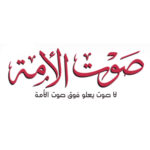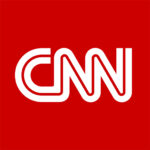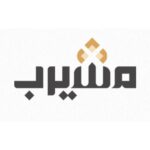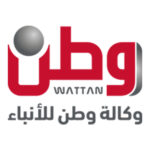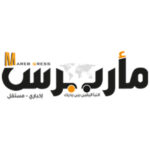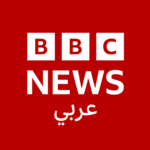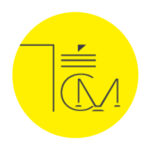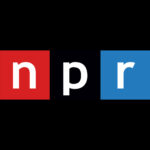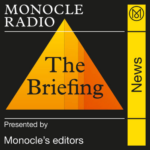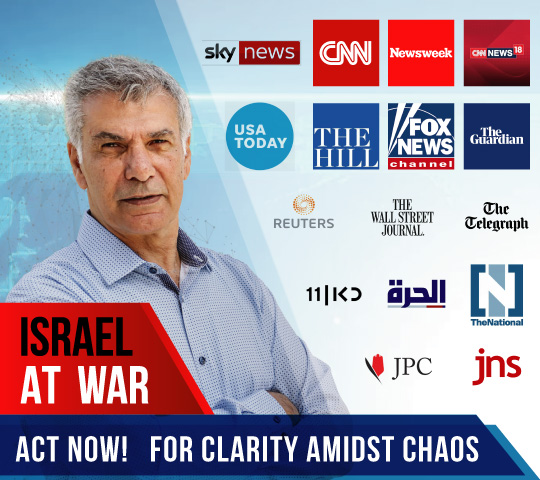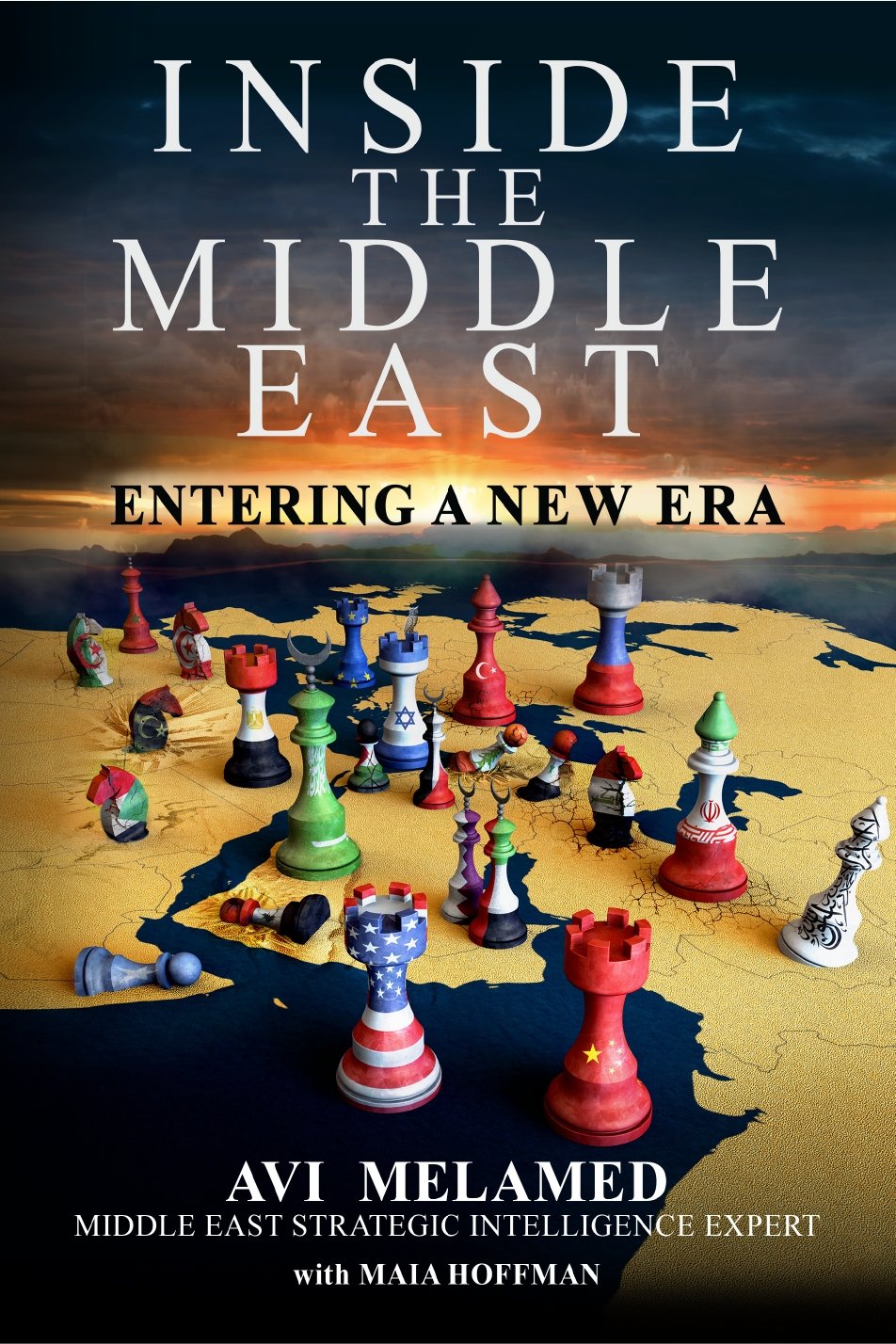|
Getting your Trinity Audio player ready...
|
My Enemy is My Best Asset
Former United States Secretary of State, Dr. Henry Kissinger, published an article on August 2, 2017 entitled “Chaos and Order in a Changing World.”
In his piece, Dr. Kissinger provides analysis regarding different global arenas.
He opens his section about the Middle East with the following: “In Eurasia and along Russia’s borders, world order is challenged by the consequences of consolidation. Around the periphery of the Middle East, it is threatened by the turmoil of dissolution. The Westphalian-based system of order that emerged in the Middle East at the end of the First World War is now in a shambles. Four states in the region have ceased to function as sovereign. Syria, Iraq, Libya, and Yemen have become battlegrounds for factions seeking to impose their rule.”
He continues by saying: “…Most non-Isis powers—including Shia Iran and the leading Sunni states—agree on the need to destroy it… If the Isis territory is occupied by Iran’s Revolutionary Guards or Shia forces trained and directed by it, the result could be a territorial belt reaching from Tehran to Beirut, which could mark the emergence of an Iranian radical empire.”
****
As always, it is a meaningful educational and intellectual experience to read Dr. Kissinger’s observations and reflections. And I agree with much of what he says.
In his piece, Dr. Kissinger makes an important and keen observation “In the contemporary Middle East, the enemy of your enemy may also be your enemy.” This is insightful, sharp, and very accurate.
However, and with great humility and deep respect, I do not agree with Dr. Kissinger’s observations regarding Iran and ISIS.
In the first part of this article I want to primarily focus on the following statement:
- “Most non-Isis powers—including Shia Iran and the leading Sunni states—agree on the need to destroy it.”
Different from Dr. Kissinger, I argue that ISIS is a card that the Iranian Mullah regime uses to further its hegemonic goals of becoming the regional Superpower – and as long you can use the valuable card that you have in your hand you do not get rid of it.
Therefore, Iran’s policy towards ISIS varies according to the Iranians needs in the arena in which ISIS is operating.
For example, Iran cooperates with the Iraqi army to eliminate ISIS strongholds in Iraq, while at the same time, the Iran-Assad axis is far less vigilant to end ISIS’ presence in Syria – and, as I will demonstrate farther on in this article – even goes as far as protecting it.
Why and how is ISIS a valuable card for Iran?
The Iranian Mullah regime is ideologically inspired by the core value of “Exporting the Islamic Revolution.” The goal of Exporting the Islamic Revolution is to ensure that Iran becomes the dominant Superpower in the Middle East. To fulfill its vision, Iran is proactively and aggressively expanding its influence in different parts of the region through three primary mechanisms:
- Diplomatic, commercial, and military relations with other states;
- Educational, charitable, and cultural activities – often used as shadow operations, money laundering mechanisms, or hidden channels which finance and operate terror cells around the world;
- And the most important and powerful mechanism – the creation, cultivation, fostering, and use of agents and proxies which are massively armed and financed by Iran. (On that matter read my article Taking the Kidnapper Hostage: The Battle for the Sovereignty of Lebanon, August 2017)
However, there is another factor that enables Iran to further deepen and expand its influence.
And that factor is ISIS.
The majority of Muslims (about 85%) are Sunnis; the minority (about 15%) are Shi’ites. Relations between Sunnis and Shi’ites are tense and fraught with animosity and hostilities. The struggle between Sunni Islam and Shi’ite Islam has been one of the key factors which has shaped regional history. An abyss of hostility, differing ideological and theological opinions, political clashes, and unending violence has divided Sunni and Shi’ite Islam for more than 1300 years.
ISIS is a Sunni Salafi-Jihadi organization, and therefore, one of its core values and ideologies is an uncompromising hostility towards Shi’ites and the Iranian Mullah regime.
With the emergence of ISIS, Iran quickly realized that this Sunni Salafi-Jihadi entity offered Iran a great tool to proactively expand the Mullah regime’s influence and presence in the region.
Why?
The international community, shocked by ISIS’ atrocities, has labeled ISIS as the ultimate threat; the evil empire that must be defeated. The mission of “fighting ISIS” has become a high priority of the Middle East policy of Western powers – and mostly the US.
Taking advantage of that, Iran – one of the largest state sponsors of terror, presents itself as part of the “global effort to fight terror” i.e. ISIS.
- In the name of “fighting terror” i.e. Sunni Militant Islamic groups like ISIS, Al-Qaeda and others – Iran justifies the fact that, either directly or by proxies, the regime has taken over and currently occupies parts of Iraq and Syria.
- In the name of “fighting ISIS,” the Iran-Assad axis – determined to maintain its rule over Syria, is demolishing Syria, killing hundreds of thousands of Syrians, expelling and forcefully displacing entire Syrian Sunni communities, and creating millions of Syrian refugees.
- Iraqi Shi’ite militias, armed, funded, and operated by Iran are “fighting ISIS” in Iraq – and as in Syria, are forcing a mass migration of the Sunni population, and they vow to move to Syria to “fight ISIS.”
- Iran’s most important proxy, the Lebanese Hezbollah – formally defined by the US as a terror organization, presents its involvement in the war in Syria, in the service of Iran, as part of the “fight against ISIS.”
ISIS was also very valuable card for Iran in the context of its nuclear program.
- ISIS emerged in Iraq in mid-2013. This was the same time that Iran was engaged in negotiations with the 5+1 states regarding Iran’s nuclear program. US President Barack Obama was facing harsh criticism by many factors in the US and the Middle East for his seeming eagerness to sign a deal with the Iranians at all costs. The issue of “fighting ISIS” became a card which serviced both President Obama and Iran. Emphasizing the concept of joining forces with Iran to fight ISIS, helped Obama divert and diffuse criticism – and finally sign an agreement which – in the eyes of the Mullah regime, was a very good deal.
Iran also knows that the more it is viewed as a force fighting ISIS, the more it will fuel the animosity of Sunnis towards Iran.
- That animosity will encourage more Sunnis to join ISIS. Reports in the Arab media about atrocities conducted by Iraqi Shi’ite Militias (some of which are supported by Iran) against Iraqi Sunni civilians, serves Iran very well. These reports fuel animosity of Sunnis towards Iran, thus ensuring the continuation of Sunnis streaming to ISIS.
ISIS is currently losing its hold in Syria mostly because of the US–Kurdish-Jordanian joint effort, not because of Syrian-Iranian efforts. However, Iran and Assad will continue to use the “fighting terror” card even if ISIS is no longer relevant – they will simply label Syrian Rebel groups as “terror groups.”
Fighting ISIS ensures Iran that ISIS will be around, and therefore enables Iran to continue to use the “fighting ISIS” card in the service of Iran’s expansionist and hegemonic vision to become the regional superpower. It is a perfect and perpetuating mechanism.
*****
There is an even more cynical aspect to “fighting ISIS” and “fighting terror.”
Some of the same factors who chant the “fighting ISIS” and “fighting terror” slogans actually cooperate with ISIS to enhance their own interests.
Syrian President Bashar al-Assad is one example:
Practically from the beginning of the war in Syria in 2011, Bashar Al-Assad adopted the slogan of “The War On Terror” and markets his domestic policy to the Syrian people and to foreign diplomats on the world stage – not as the perpetrator of terror – but rather the defender of the Syrian people against terror.
Assad, who has destroyed his own country to keep himself in power; a brutal dictator who has killed hundreds of thousands of his people – many of them civilians, using chemical weapons, deliberate starvation, and strategic and barbaric destruction of cities and towns; a tyrant who has imprisoned, tortured and executed thousands of Syrians – presents the war in Syria as a “war on terrorists who want to turn Syria into a terror entity that will threaten the world.” He assures the world and the Syrian people that he and the Syrian army are “fighting ISIS” to protect the homeland from the terrorists who are looking to destroy Syria.
ISIS has been operating in Syria since the end of 2013. Its major strongholds in Syria are the cities of Al Raqqa, Palmyra, Deir ez-Zor, and a few villages scattered mostly in central and eastern Syria. ISIS also has a limited presence in the southwestern part of Syria, next to the Syrian-Jordanian-Israeli triangle borders, and until recently, had also a limited presence along the Syrian-Lebanese border.
Interestingly enough, although the Assad regime is committed to “fighting ISIS,” and ridding Syria of these terrorists – ISIS was able to gain control over all of the above areas practically undisturbed by Assad’s army. Suspiciously enough, convoys of ISIS vehicles crossed miles and miles of open Syrian desert safely and unhindered, in spite of the fact that these convoys are perfect sitting ducks for aerial attacks.
Moreover, accumulating information suggests that Syrian businessmen associated with the Assad regime sell ISIS goods, commodities, cellular phones, computers and more.
Right under the nose of the Assad regime, ISIS extracts oil from Syrian oil fields and sells it at lower prices in Turkey – thus financing its military capacities. In August 2017, the head of the Syrian Parliament’s Budget and Accounts Committee, Hussein Hassoun, announced that in 2016 alone, the amount of Syrian oil ISIS has exploited caused Syria 1.3 billion USD in losses. One must wonder then why the Assad regime which – reminding you again – “fights ISIS” – has for three years (thus far), tolerated the fact that ISIS is looting Syria’s oil – one of Syria’s major income sources…
The Iran-Assad axis shows no vigilance or determination to end ISIS’ presence in Syria.
In fact, the next episode demonstrates that the Assad-Iranian axis actually spares no effort to make sure ISIS is still around and safe and sound.
On August 19, 2017 with a lot of fanfare, the Lebanese Hezbollah and the Syrian army announced an offensive operation against the Islamic State in the area of Al-Qalamun in western Syria near the Lebanese border. Hezbollah announced that it was meeting its pledge to “remove the terrorist threat at the borders of the nation” and was fighting “side by side” with the Syrian army.
On August 28, 2017 following an agreement between the ISIS and Hezbollah and the Assad regime, reportedly three hundred ISIS militants based in Al-Qalamun were evacuated and transported by Red Crescent vehicles secured by Assad’s forces. The militants were supposed to be relocated undisturbed in Deir ez-Zor in eastern Syria. As of the time this report is being written, the ISIS convoy has not reached its destination, as it was attacked by a US led coalition airstrike, the result of which is that the convoy is stuck and unable to advance and is currently in an area controlled by the Assad regime.
These episodes, together with the fact that in Syria ISIS has been primarily fighting Syrian rebel groups, leads to one clear conclusion. ISIS’ presence in Syria is a valuable card in the service of the Iran-Assad axis.
Another example of how those, under the slogan of “fighting ISIS,” actually use ISIS as a card, is Turkey:
Of Turkey, Dr. Kissinger writes: “The Western calculus has been complicated by the emerging transformation of Turkey, once a key moderating influence, from a secular state into an ideologically Islamic version. At once affecting Europe by its control over the flow of migrants from the Middle East and frustrating Washington by the movement of oil and other goods across its southern border, Turkey’s support of the Sunni cause occurs side by side with its efforts to weaken the autonomy of the Kurds, the majority of whose factions the West has supported heretofore.”
Turkish President Erdogan, a brutal dictator, terrorizing millions of Turks, is also “fighting ISIS.”
That being said, Erdogan enables ISIS to operate freely in southern Turkey as Dr. Kissinger correctly states: “…frustrating Washington by the movement of oil and other goods across its southern border…”
For Turkey – as with Iran – ISIS is a tool to advance its own goals.
Erdogan uses ISIS to put military pressure on the Kurds in northern Syria. This serves Erdogan’s interest to prevent the establishment of an independent Kurdish Autonomy in north Syria. To that end, Erdogan allows the undisturbed traffic of thousands of ISIS militants through Turkey – including Chinese militant Uighurs, members of the East Turkestan Islamic Movement (ETIM) who are defined by the United Nations as a terror group.
These facts did not prevent President Erdogan from announcing on August 26, 2017 that “Foreign powers use ISIS as a pawn.”
In mid-August 2017, the Iranian Chief of Staff, General Mohammad Hossein Bagheri, arrived in Turkey and met with Turkish senior officials and military personnel. He also met President Erdogan, who later reported that he and his guest discussed “the need to fight terror.”
“Fighting Terror” has become the most valuable card to play in the Middle East. Almost every factor – and primarily the most extreme terrorist entities, like Iran and its agents – use that magic slogan to promote their own interests and achieve their own goals. (For more on how the slogan of “fighting terror” is skillfully used by Iran and Russia and boomerangs on the US, read “A Growing Whirlpool of Violence; The Middle East Legacy of Barack Obama” – January 2017)
Dr. Kissinger’s accurately noted that “In the contemporary Middle East, the enemy of your enemy may also be your enemy.”
To that, I would like to add the following: “My Enemy is My Best Asset.”
****
Iran’s Radical Empire
I would now like to and address the following two statements made by Dr. Kissinger:
- “…Syria, Iraq, Libya, and Yemen have become battlegrounds for factions seeking to impose their rule…”
- “…If the Isis territory is occupied by Iran’s Revolutionary Guards or Shia forces trained and directed by it, the result could be a territorial belt reaching from Tehran to Beirut, which could mark the emergence of an Iranian radical empire…”
In both observations, unfortunately, Dr. Kissinger inaccurately or at best – partially accurately, reads the reality.
- Syria, Iraq, Libya, and Yemen have become battlegrounds for factions seeking to impose their rule.”
Dr. Kissinger fails to recognize the fact that three out of the four Arab states he refers to: Syria, Iraq and Yemen, and another Arab state he did not mention – Lebanon – all have one very important common denominator.
In all four of these states, Iran is proactively and massively involved in boosting political instability – either through direct military involvement and / or through the use of agents.
- Syria, under Bashar al-Assad’s rule, has become the most significant strategic ally of Iran. Furthermore, Iran today physically occupies parts of Syria. Syria is the major cornerstone in the Iranian attempt to establish an Iranian controlled land corridor, stretches from Iran to the Mediterranean Sea.
- Accumulating reports indicate that Iran operates in southern Iraq as if it was its own territory. Reportedly, Iranian police are present in southern Iraq; the border passage between Iran and Iraq is controlled on both sides by Iran; Iran has paved a fifteen-mile road from its territory to the Iraqi eastern district of Diyala, bordering Iran – the road is reportedly exclusively used for convoys of weapons, ammunition, and militants crossing from Iran to Iraq; Iran sells oil extracted in Iraq; and the list goes on…
- Iran expanded its presence in Yemen through an alliance with the Houthi Shi’ite tribes. Therefore, as of today, Iran has the ability to threaten the Bab al-Mandeb Straight. The Bab al Mandab Strait, located between Yemen and the Horn of Africa, the chokepoint connecting the Red Sea with the Gulf of Aden and the Arabian Sea, and a strategic link between the Mediterranean Sea and the Indian Ocean, is one of the most strategic points on the planet. Whoever controls it, controls a major portion of the world’s economies, and has the ability to control – or strangle, much of the worlds commerce.
- Having the Houthis as an armed agent is a valuable card for Iran for another substantial reason; it enables Iran to threaten its biggest opponent – Saudi Arabia which borders Yemen to the north. That ability was demonstrated in a few missile attacks which the Houthis launched on Saudi Arabia. In one case – in October 2016, the Saudis announced they had successfully intercepted a missile shot by the Houthis which was aimed to target the city of Mecca – one of Islam’s three holy sites.
- Lebanon, kidnapped from within by Iran’s most powerful agent – the Lebanese Hezbollah – has become to a large extent an Iranian protectorate. Iran dictates Lebanon’s domestic and foreign policy through its proxy Hezbollah. (For more on that issue please read my August 2017 article Taking the Kidnapper Hostage: The Battle Over the Sovereignty of Lebanon)
- “If the Isis territory is occupied by Iran’s Revolutionary Guards or Shia forces trained and directed by it, the result could be a territorial belt reaching from Tehran to Beirut, which could mark the emergence of an Iranian radical empire.”
For some reason, Dr. Kissinger fails to recognize the fact that the reality on the ground is that the Iranian Radical Empire already exists “in Isis territory.”
Iran, Iranian agents, proxies, and Iranian trained and backed Shi’ite militias have been deeply rooted in Syria for at least the past five years including:
- Iranian Revolutionary Guards (IRG)
- Thousands of Iranian backed Shi’ite militias including:
- The Afghan Shi’ite militia, Al Fatimiyoun (which Iran created specifically to fight in Syria)
- The Iraqi Hezbollah, Iraqi Harakat al-Nujaba, Iraqi Ahl al-Hak
- The Lebanese Hezbollah
- The Pakistan Shi’ite militia Liwa Zainebiyoun
Iranian Shi’ite militias are in Syria along with – not instead of – ISIS.
Thus, Dr. Kissinger’s two inaccurate or partially accurate observations leads him to the conclusion that “Iranian radical Empire” is a possible development.
When the reality on the ground is that the Iranian radical Empire already exists.
****
Dr. Kissinger ends his article with a plea to the West: “If the West stays engaged without a geo-strategic plan, chaos will grow. If it withdraws in concept or in fact—as has been the temptation over the past decade—great powers like China and India, which cannot afford chaos along their borders or turmoil within them, will gradually step into the West’s place together with Russia. The pattern of world politics of recent centuries will be overthrown.”
I wholeheartedly agree with that statement.
Among the different factors and circumstances which have helped Iran further its vision of becoming the regional Radical Empire, one should include the inaccurate – or at the very best, a partially accurate – reading of the Middle Eastern map. This misinterpretation of reality on the part of Western policy influencers, policy makers, and leaders has resulted in accumulating failures of United States policy in the Middle East which has backfired on US strategic interests.
Here are examples of failed United States administration policies which have played right into Iran’s hands and have resulted in the emergence of Iran’s Radical Empire which presents a growing challenge and threat to US strategic interests:
President Carter abandoned Iran’s Mohammad Reza Shah Pahlavi, thus paving the way for Ayatollah Khomeini’s Islamic Revolution in Iran (1979). In 2016, the BBC broadcasting in Farsi revealed a letter sent by Khomeini to Carter in which he promised President Carter that US interests in Iran will be in tact should the US help Khomeini take over Iran.
President George W. Bush’s administration toppled Saddam Hussein. Flipping the Iraqi politics on its head and replacing the Sunni government with a predominately Shi’ite governments, influenced by Iran. The outcome was growing anger and resentment among the Iraqi Sunnis – and that paved the road for the emergence of ISIS in mid-2013.
President Obama enabled Iran to physically occupy parts of Iraq and Syria and Iraq, expand its influence in Yemen, and signed a deal with Iran legitimizing its nuclear program. (For more on that topic read my March 2015 article Pax Amer-Iran).
In my view, these accumulative failures stem from a built-in systemic failure in the way information about the Middle East is gathered and analyzed in Western circles. The result of which is an inaccurate – or at best partially accurate, reading of the Middle East map, and an inability to identify – in real time – significant developments, and therefore to foresee the ramifications of such events.
Here is a current example of my thesis.
The title of an August 31, 2017 article published in the Jerusalem Post is “Global media find the Iranian corridor to the sea.’ The article discusses the fact that Western media and Western Middle East scholars have recently discovered the fact that Iran has established a “corridor” of control from Iran to the Mediterranean Sea and express concerns over the severe ramifications of the process. It says: “News of Iran’s involvement in Syria and its corridor to the Mediterranean that stretches from Tehran, via Iraq and Syria to Lebanon, has been widely reported in the last weeks. This comes after more than a year of warnings by a disparate group of writers and analysts.”
In February 2102, I published an article entitled “Is War in the Middle East Inevitable?” In this article, as well as many articles since then (see examples below) I have outlined the Iranian intention to export the Islamic Revolution, to develop an Iranian corridor the Mediterranean Sea, to expand their influence in the region through using Hezbollah as a tool, and their use of the war in Syria as a platform towards their goal of regional hegemony. Here is a quote from my February 2012 article: “The alliance with Syria and the Iranian presence in Lebanon has allowed Iran direct access to the Mediterranean Sea. Access to the Mediterranean is important to Iran for strategic as well as ideological reasons – including their ability to export the Islamic Revolution.”
The Jerusalem Post article opens with the following paragraph: “Will the discovery of the Iranian “corridor” by most of the region’s media and by Western media, as well as by politicians and experts lead to any change?”
Iran’s methodical and sophisticated expansion strategy has been evident for years.
The fact that policy influencers and leaders failed to recognize such a dramatic development in its early phases – in real time – re-emphasizes a core concern I have identified and one which I address in my writing, lecturing, and teaching. And that is that too often the lenses used in Western circles to look at the Middle East map are wrong. (On this read my June 2016 article “America Must Revolutionize its Understanding of the Middle East.”
An inaccurate reading of the reality in the Middle East cannot produce a productive foreign policy that will serve US interests.
Addressing this challenge requires a two-fold approach. The first step is to identify and understand the reasons for the wrong lenses. The second step is to create a more accurate lens.
I’m convinced the challenge of inaccurate reading of the Middle East reality can be productively addressed. That is why I designed Inside the Middle East – Intelligence Perspectives.
ITME, now in its fifth year under the auspices of The Eisenhower Institute at Gettysburg College, gives students the right lenses to accurately read the Middle Eastern map.
ITME teaches the principals and application of simple, yet practical Intelligence Analysis Tools. Instructing people to apply an intelligence mindset towards information educates them to media literate critical thinkers.
ITME encourages the extraction of information directly from Middle East Platforms of Information. This cuts the dependence of the western audience on western based media sources, and allows direct and unmediated access to the Middle East which is a key element to a better understanding of the region.
A combination of these skills and tools, increases the odds for a more accurate reading of the Middle East reality, which will result in a geo-strategic policy which will answer Dr. Kissinger’s call, and more effectively and productively serve the United States strategic interests.
****
Click Here To Download a PDF of this Article
If you want to have a better understanding of the news and what really drives the unfolding events…
Read the latest book of Avi Melamed,
INSIDE THE MIDDLE EAST | ENTERING A NEW ERA, available now >>>
Follow me on Twitter @AviMelamed; Facebook @InsideTheMiddleEast; for more Videos on YouTube https://www.youtube.com/c/AviMelamed
I can always be reached at Av*@********ed.com


